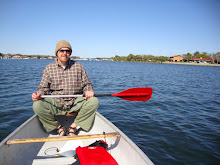An abbreviated, edited version of this article appeared in the June 2007 issue of Gobar Times, a youth magazine published by the Centre for Science and Environment.
China’s consumption and pollution trends will continue to have important consequences for the entire planet. As such, ever-greater attention is being paid to gauging and influencing the environmental consciousness of Chinese citizens. Many scholars and eco-advocates view increased and more widely-distributed environmental education programs as one important way to improve environmental awareness in China. While such programs, like the Chinese environmental movement, are still in their infancy, they provide a key nexus for cooperation between government agencies, Chinese environmentalists, and international NGOs.
Nearly every facet of Chinese society has undergone significant reform in recent years, including the education sector. As part of this reform, the central government began encouraging the inclusion of environmental curriculum in China’s schools and universities in the 1980s. The most recently released curricular guidelines, which the Ministry of Education has called central to
China’s first civic environmental organization, Friends of Nature (FON), was registered in 1994. While still a relatively new presence in
More recently, international non-governmental organizations such as WWF are emerging as major players in Chinese environmental education efforts. In addition to its collaboration with the Ministry of Education on national curriculum development, WWF has helped the Ministry create an Environmental Educators’ Initiative which will provide ongoing support to teachers in an effort to “mainstream” the curriculum. Their work has included establishing Teacher Training Centers, developing resource materials, and working directly with a number of pilot schools and universities/professional training institutions.
Despite these exciting advances, significant challenges to furthering environmental education in China remain. Lack of training for existing teachers is a huge issue, especially as environmental education often requires not only new knowledge, but also different teaching methods and the ability to negotiate multiple disciplines. Studies have also revealed a dearth of effective teaching materials and inadequate implementation of environmental education objectives at the high school and secondary vocational schools level. In addition to efforts such as WWF’s to address these concerns, Chinese educators have also stepped up. A professional journal, “Environmental Education” (Huanjing Jiaoyu), has been established, and more than 120 Chinese colleges/universities now offer environmental education training programs. Qinghua University has even launched a full-scale “Green University Campaign.”
One of the most significant challenges to real change, however, lies not in the classroom but in the marketplace. Youth nearly everywhere are being seduced by consumerism and urbanism, and Chinese young people are no exception. Yet this newest generation will exert unprecedented influence on the global environment, and the decisions they make will help determine the habitability of this planet for future generations. Hopefully, thanks to the work of an impressive collaboration of government, civil society, and educators, their decisions as consumers and citizens will be informed by a heightened understanding of the interactions between humans and their environment.
Sources:
-Journal of Contemporary China (2003), 12(36), August, 519–536. The Environmental Awareness of University Students in
- China Environment Series #7, Jing Lin and Heidi Ross, “Addressing Urgent Needs: The Emergence of Environmental Education in China”
-Chinese Education and Society, vol. 37, no. 3, May/June 2004, pp. 39–45. EDITORIAL DEPARTMENT. “The Environmental Education Outline and the Environmental Education Magazine”
-Chinese Education and Society, vol. 37, no. 3, May/June 2004, pp. 34–38. TIAN QING.
“Historical Review of Environmental Education in China”
-Chinese Education and Society, vol. 37, no. 4, July/August 2004, pp. 32–38. JIANG KEQIN. “Analysis of Research Findings on Environmental Education in Secondary Vocational Schools in Shanghai”
-All-China Environment Federation website: http://www.acef.com.cn/english/
-“Interview: ‘Constructive engagement is the only option’ for Nature”
Wed, 2003-10-01, http://www.chinadevelopmentbrief.com/node/131
-ENVIRONMENT AND BEHAVIOR, Vol. 38 No. 1, January 2006 5-21. ENVIRONMENTAL PERSPECTIVES AND BEHAVIOR IN CHINA: Synopsis and Bibliography. PAUL G. HARRIS.
-Shen, J. S. (2002). Huan bao yi shi yu
- Fang, X. Q. (2002). Xiang cun shi fang sheng huan jing yi shi de tiao cha [Village teacher students'environmental consciousness survey]. Huan Jing Jiao Yu [Environmental Education], 4, 24-25.
- Zhou, X. (2002). Huan jing jiao yu dehe xin li nian hemubiao [The core meaning of environmental education and its goal]. Bei Jing Shi Fan Da Xue Xue Bao [Beijing Normal University Journal], 118-122.
